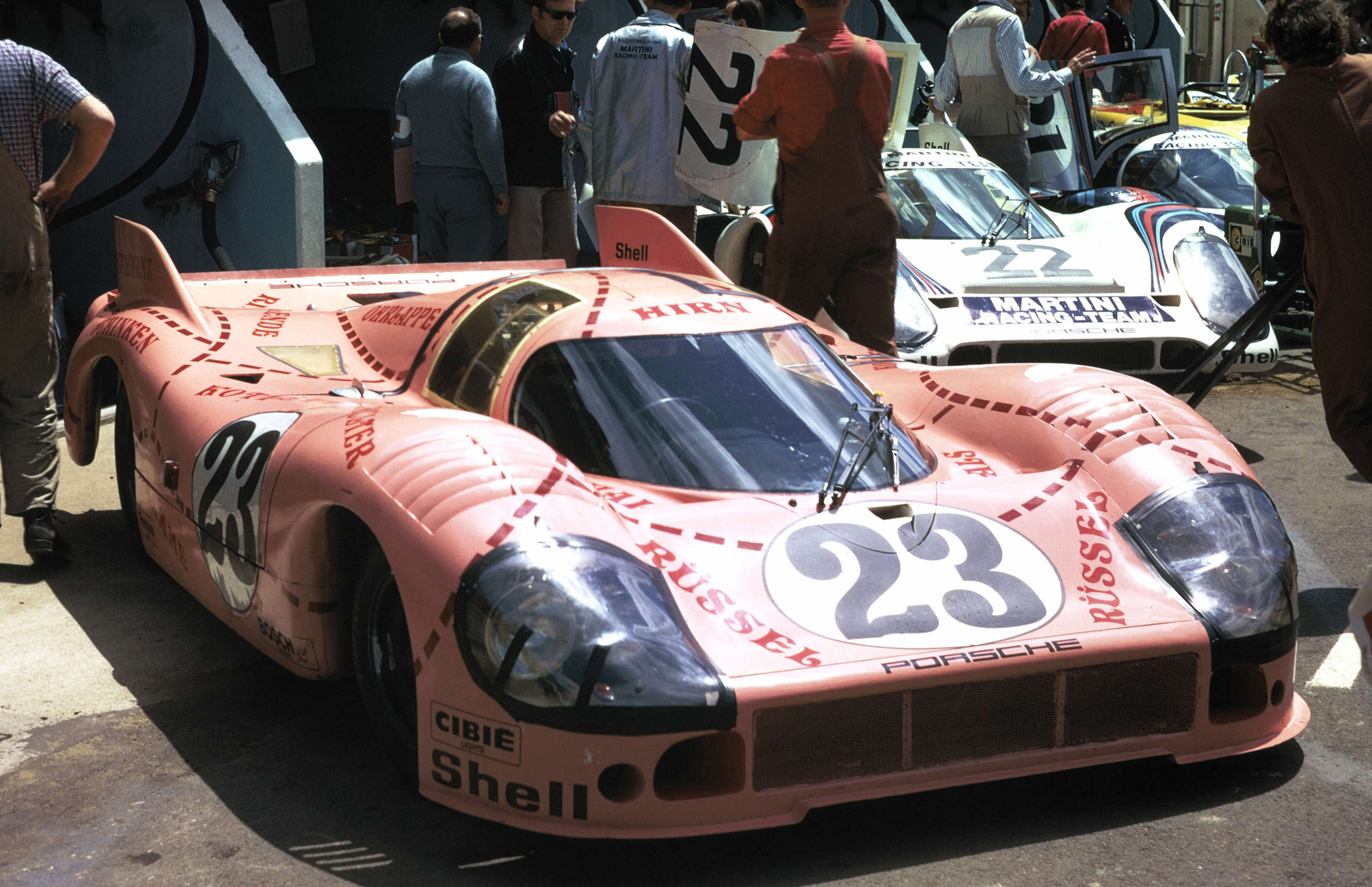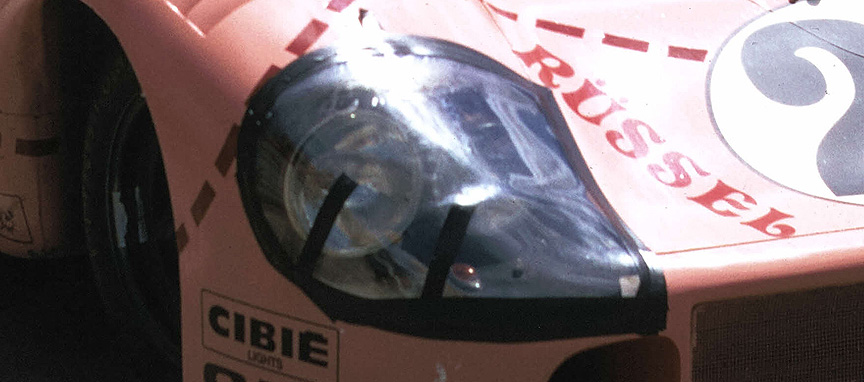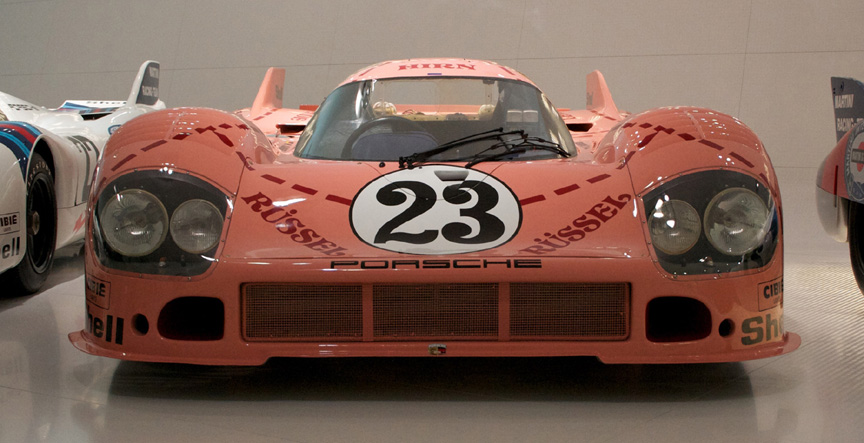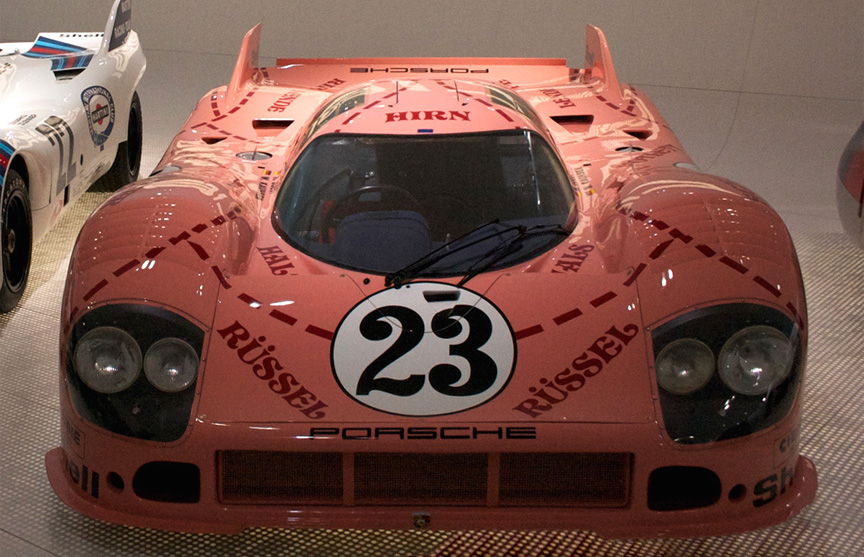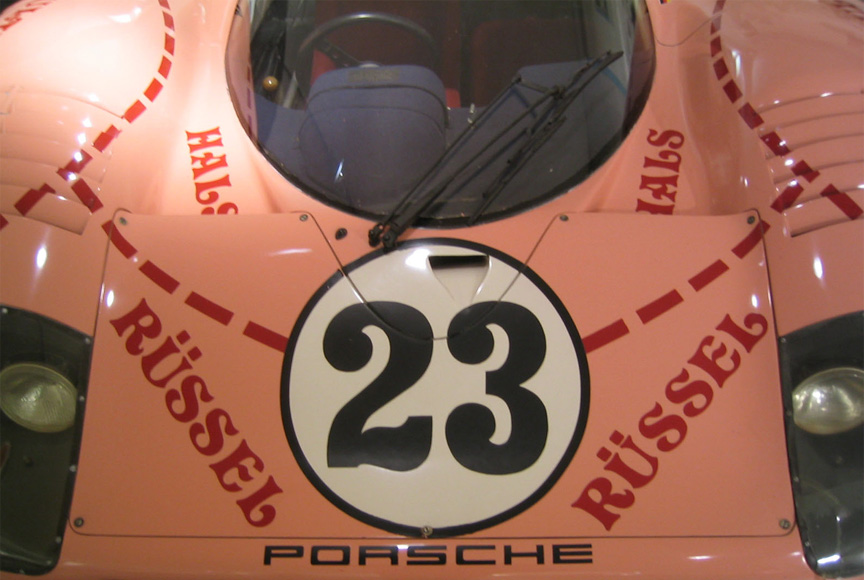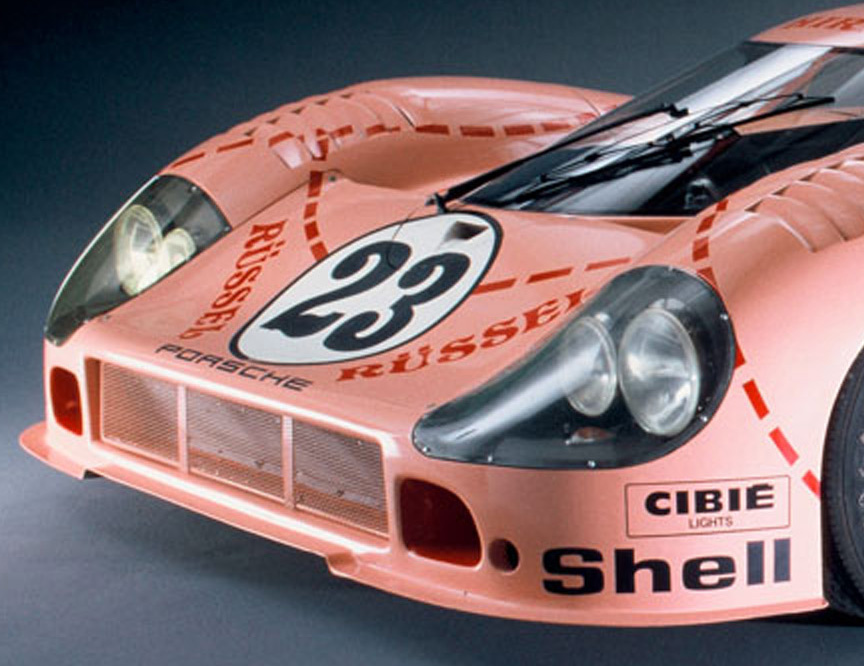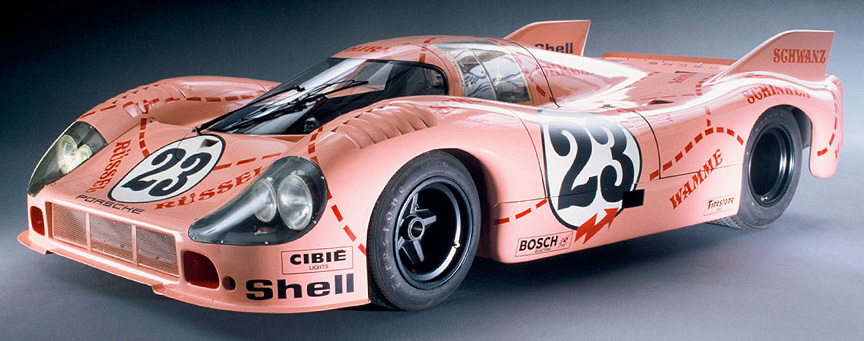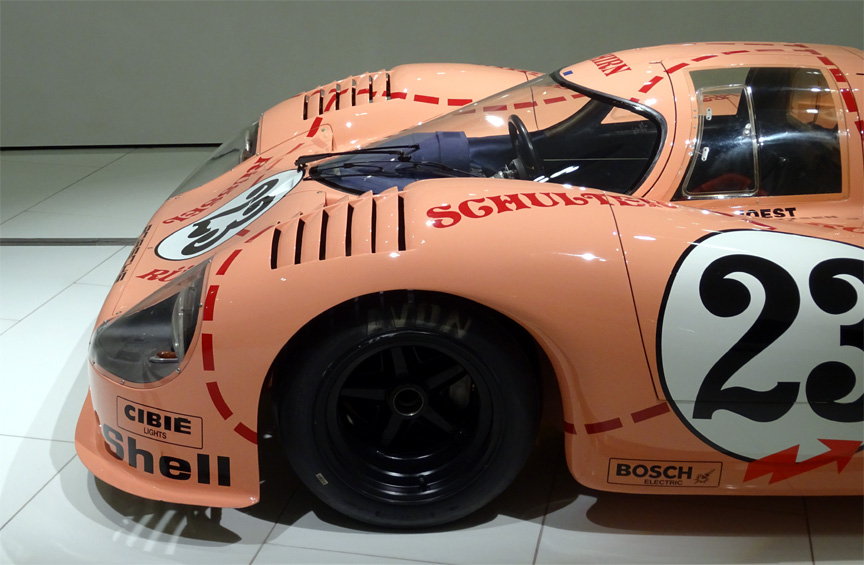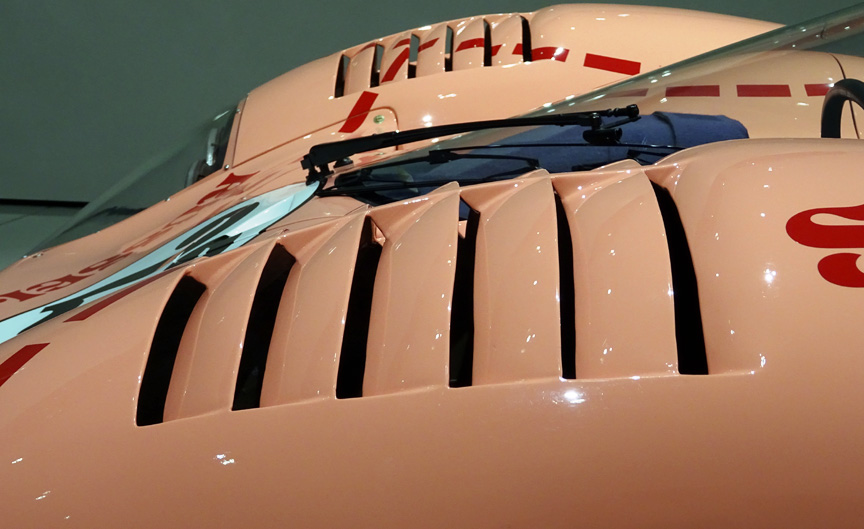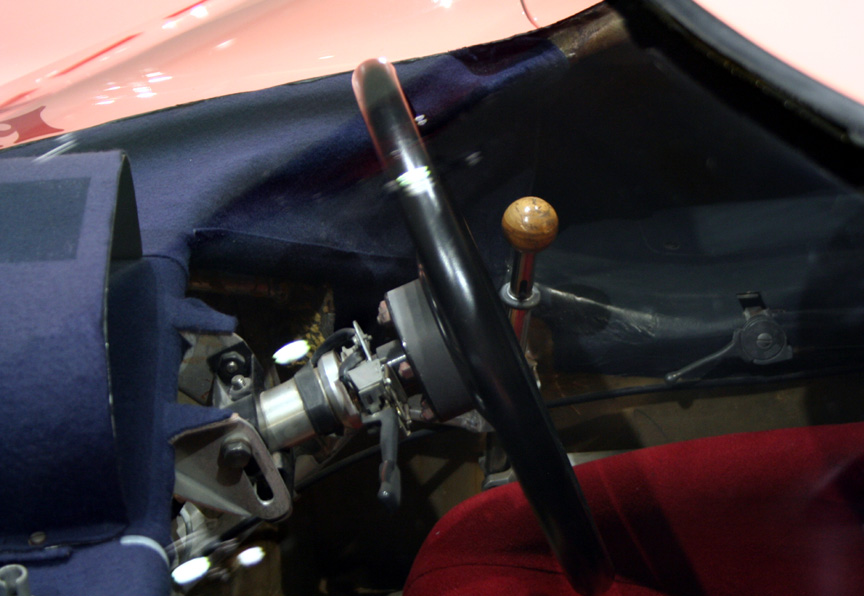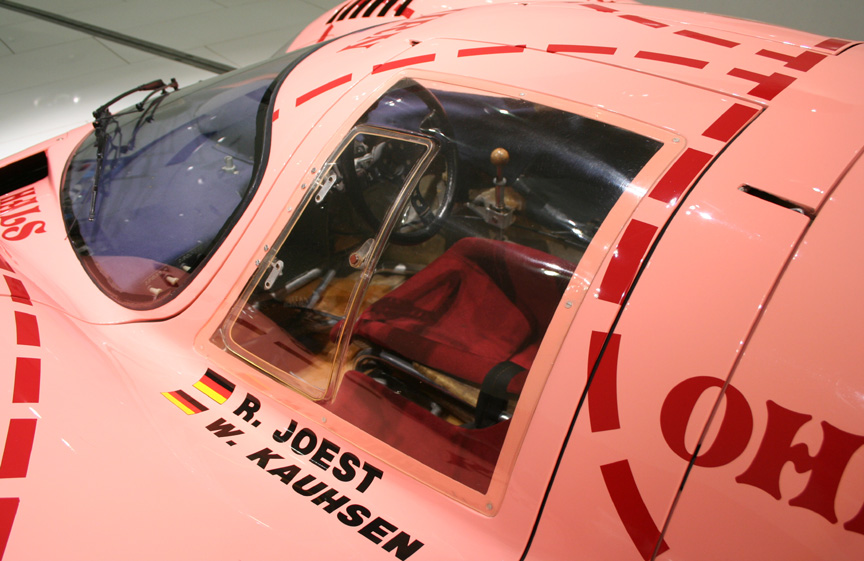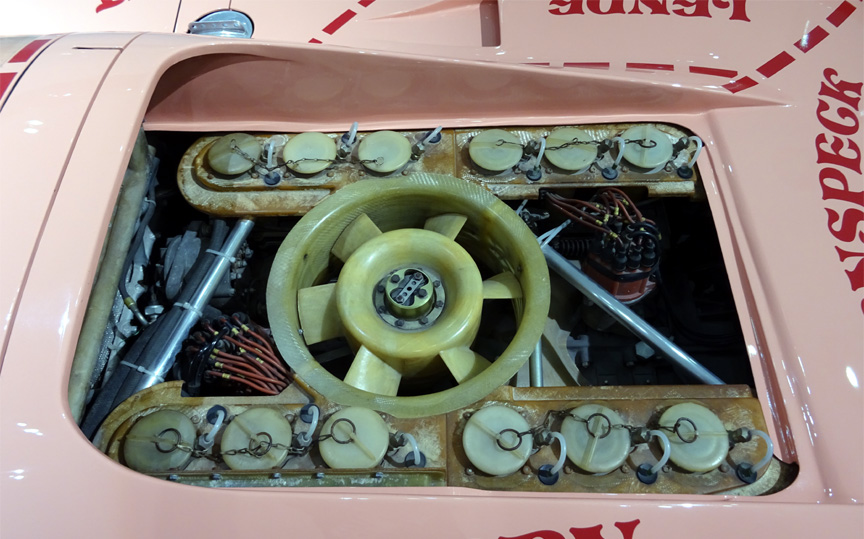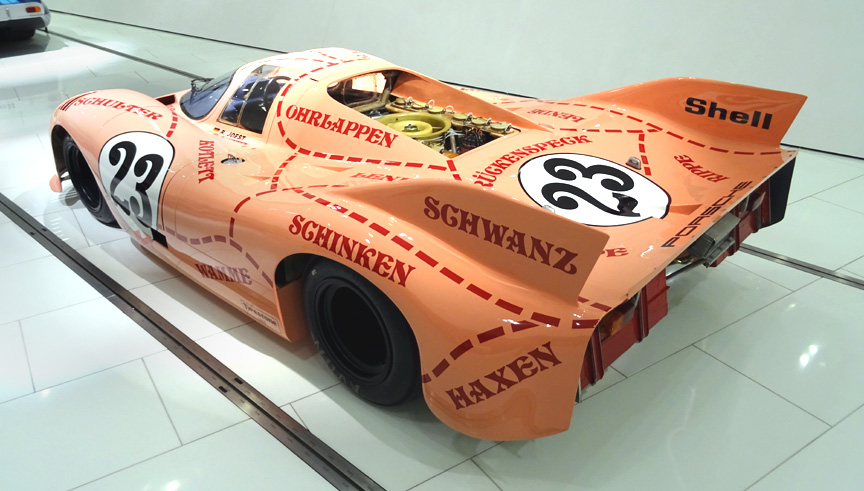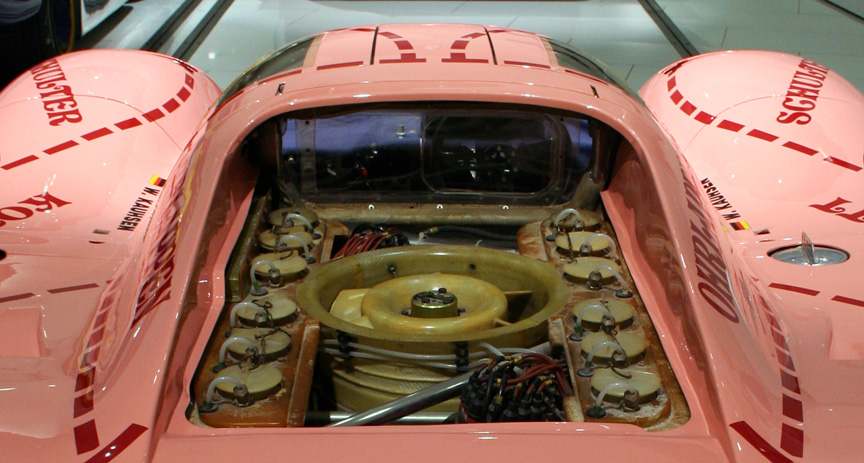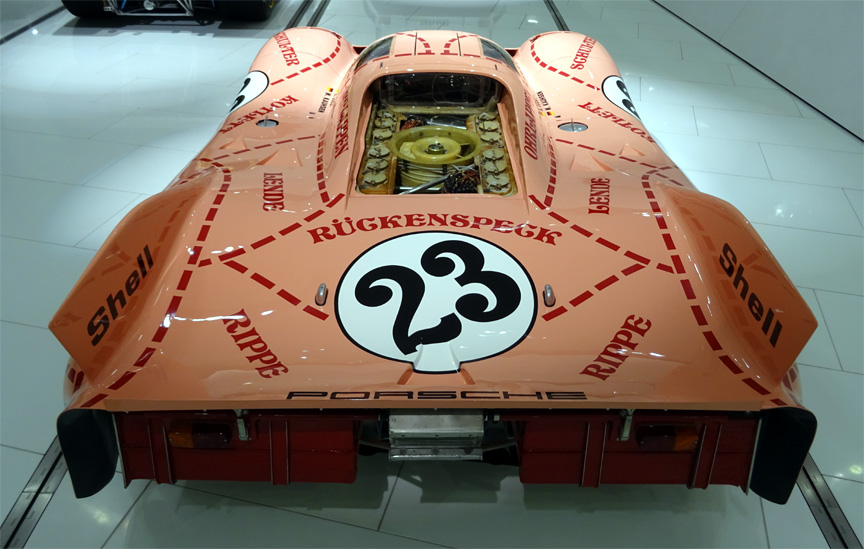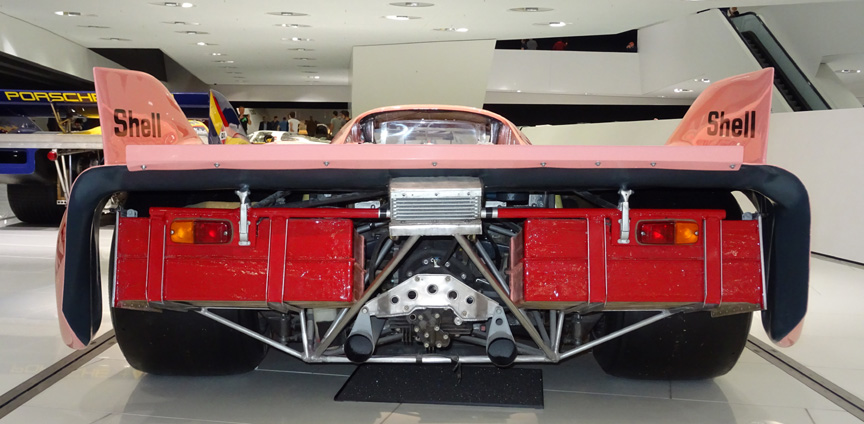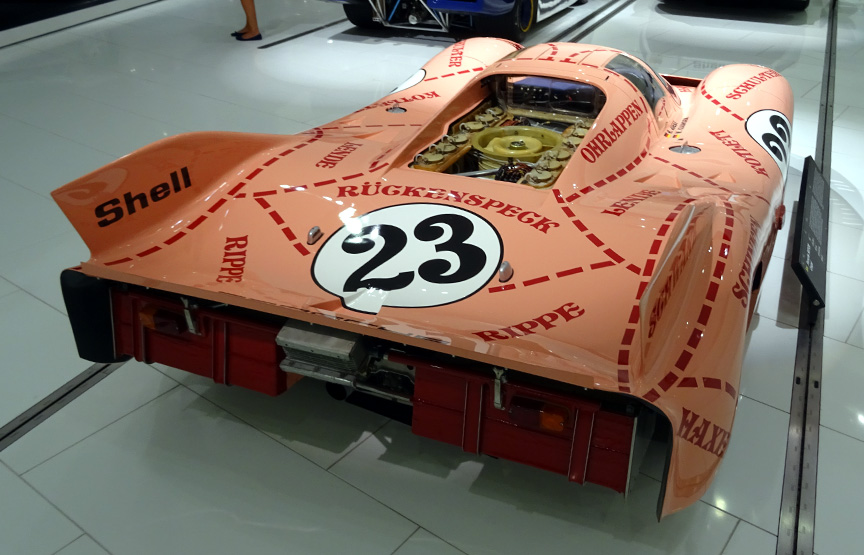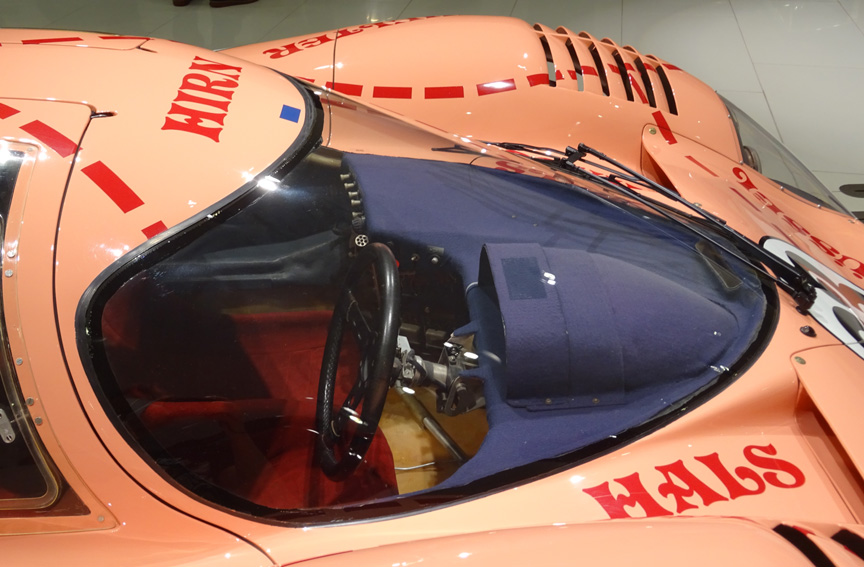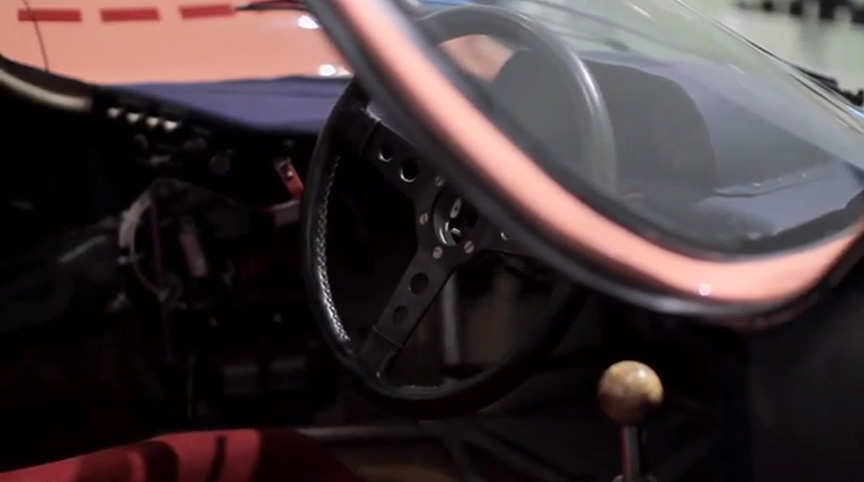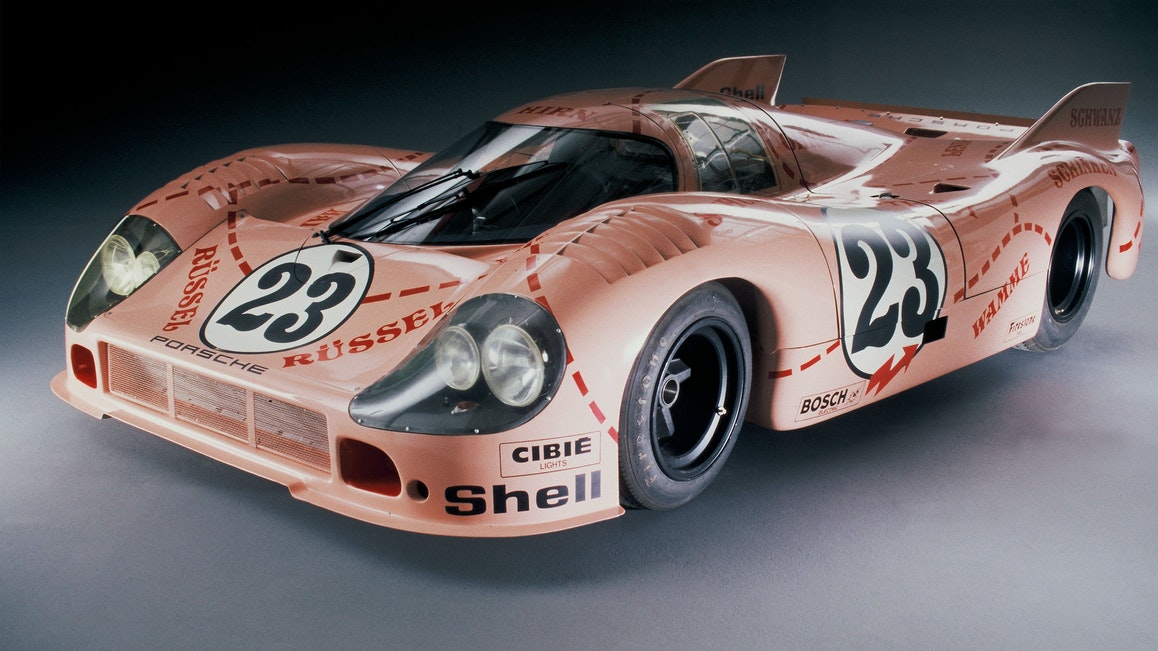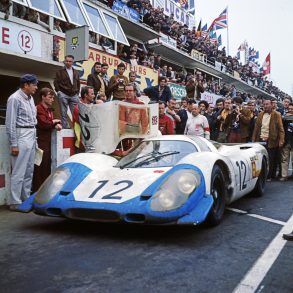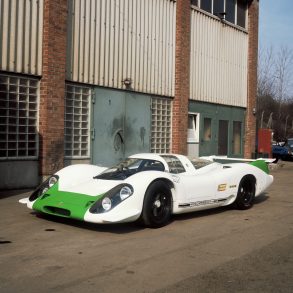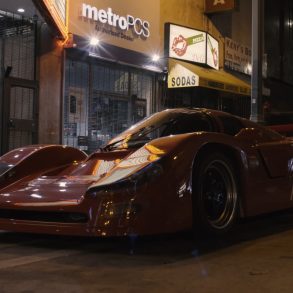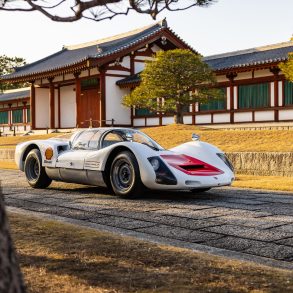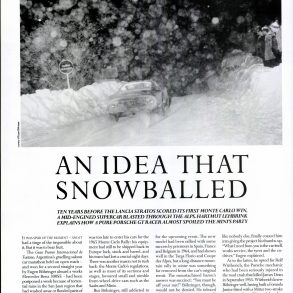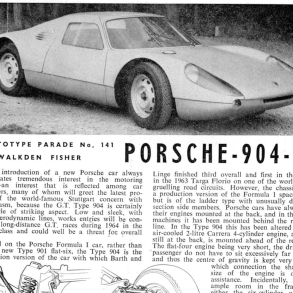Porsche 917/20 Le Mans
Porsche 917 “Pink Pig”
Premiere: 1971 April 17 at Le Mans test day / Engine: 4.9 L Flat 12 / Power: 591 bhp / Torque: 404 ft lbs / Top Speed: 240 mph
One of the most remarkable cars to ever participate in Le Mans has been the Porsche 917 ‘Pink Pig’, in 1971. Despite never making it to the checkered flag, this specimen has become one of the icons of the motorsport world. As soon as this 917/20 stepped into the track at the training session in the Circuit of La Sarthe, both fans and press alike (and even its own rivals), fell under the spell of its unique looks.
Tony Lapine, Porsche design chief at the time, was commissioned to create a drawing for a new model to participate in the 1971 edition the 24 Hours of Le Mans. His proposal was finally rejected in favor of another project entered by French company SERA (Société d’Etudes et de Réalisations Automobiles). This is their car.
SERA had been founded by Charles Deutsch, an engineer famous for its aero development when working for the French manufacturer CB. There, he had done a marvelous work on the blue-painted light prototypes, pushing a small racing car with a 1.2 litre engine to almost 300km/h during the 1966 24 Hours of Le Mans. At the time, the team was working under the responsibility of Robert Choulet, a French engineer who previously developed the flying Matra MS 640 (it is rumored that the basis lines of the Porsche 917/20 were taking from an unfinished high-drag version of the Matra racing car).
The 917/20 was a one-off aerodynamic research study. SERA kept the wheelbase and track the same, but the body was made wider. Its rear end was something between the short- and longtail. They wanted to achieve the downforce and stability of the shorttail 917 and the smaller drag and the top speed of the longtail 917.
The idea to paint it like a pig came from the Porsche design manager Anatole “Tony” Lapine. Was it because how he saw the SERA-designed 917? Anyway, the livery was so unexpected that it became famous just because of that. And the car even didn’t finish the race.
Despite its looks, the Porsche had the famous 4.9 L Flat 12, good for 600 hp engine at 8,300 rpm and proven to power other 917s to over 340 mph. Good enough it turns out to get the car started in seventh position. But luck was not on its side that year. The #23 of the Martini International Racing Team, shared by German drivers Reinhold Joest and Willi Kauhsen suffered an accident mid-way through the 24 Hours of Le Mans. They were in fifth place and had completed 180 laps, but were forced to retire.
Despite its early retirement, the Porsche 917 “Pink Pig” was forever remembered by fans which gave it plenty of affectionate nicknames in different languages. The French called it Le Cochon Rose, the Britons, Big Bertha and the Germans Der Tuffeljäger von Zuffenhausen.

